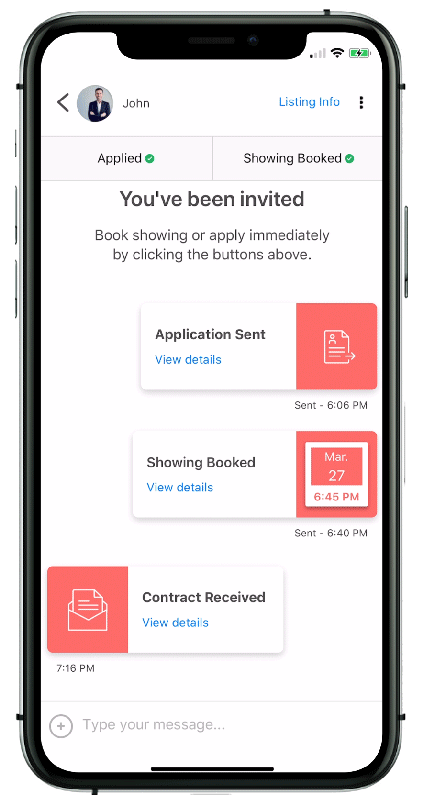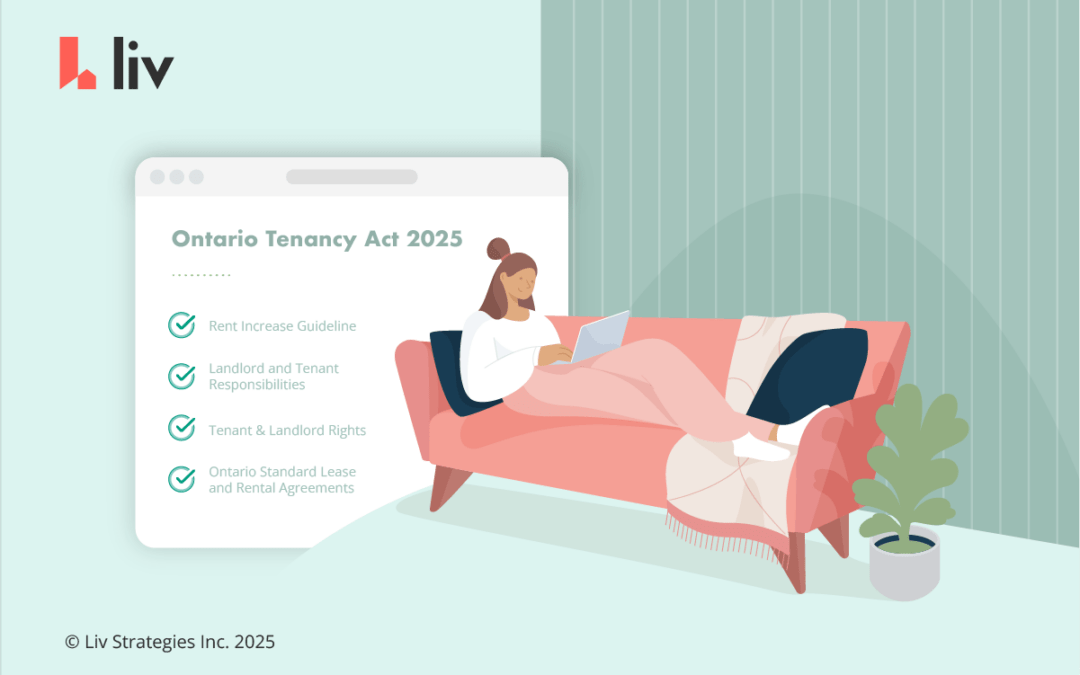At the heart of every successful landlord-tenant relationship lies the tenancy agreement, a legally binding contract outlining the terms agreed upon by both parties before the tenant moves in. In Alberta, a residential tenancy agreement is generally a formal, written document – but it can also be verbal or implied. There is a lengthy list of best practices and recommended information to include in these forms, so it can get confusing as to what’s required from each party. In this guide from liv.rent, we’ll cover everything landlords and tenants need to know about drafting and signing a residential tenancy agreement in Alberta.
Try Premium Landlord Features for free!
Alberta landlords, elevate your rental game with a FREE one-month trial of liv.rent’s Growth plan! Access $68 worth of premium features like Multi-Platform Advertising and Trust Score tenant screening reports with Equifax® credit information.
What is a tenancy agreement?
A tenancy agreement, also known as a lease agreement, rental agreement, or rental contract is a legal contract between a landlord and tenant(s) that outlines the terms and conditions of renting a residential property. This document clearly specifies the rights and responsibilities of both parties to ensure a clear understanding of the arrangement. Tenancy agreements can be oral, written, or implied – although having a written agreement is highly recommended as it provides tangible evidence in case of disputes.
A tenancy agreement will contain all of the information necessary to facilitate the rental process. This includes names & addresses of each party, details about the property being rented, payment details, the duration of the lease, responsibilities of each party, any additional rules & regulations, and signatures from each party.
About the Alberta residential tenancy agreement
Unlike B.C. and Ontario, the Alberta RTA doesn’t offer a standardized residential tenancy agreement. Therefore, landlords must draft their own agreement, or use one that has been created by a third party.
It is imperative to note that a tenancy agreement cannot supersede any rights enshrined in the Residential Tenancies Act (RTA). Any clauses attempting to waive these rights are null and void, underscoring the importance of understanding the intricacies of this agreement.
There are two distinct types of rental agreements in Alberta. Here’s a quick breakdown of each type::
Fixed term tenancy agreement
A fixed-term tenancy agreement begins and ends on certain dates, and is typically six months to one year in duration.
With this type of contract, the landlord and tenant may agree to a fixed-term tenancy that is in effect from September 1st, 2023 to August 30th, 2024. The tenancy will automatically end on August 30th, 2024 if no new agreement is reached, even without any notice given by either party.
Periodic tenancy agreement
On the other hand, a periodic tenancy agreement has a specific start date, but no clear end date. This usually takes the form of a month-to-month tenancy, and ends when one party gives notice to end the tenancy.
Week-to-week and year-to-year tenancy arrangements are also possible with this type of agreement.
>> Recommended Reading: Short-term vs. long-term rentals: which are right for you?
What to include in a lease agreement
Though Alberta doesn’t use a standardized tenancy agreement form, the provincial government does provide a list of recommended items that should always be included. It is extremely important that landlords produce a written copy of the residential tenancy agreement in Alberta, containing all of the following information:
- Names and Addresses: The agreement lists the names and addresses of the landlord (and/or property manager) and the tenant(s) involved
- Property Description: This section specifies the property’s address, plus any necessary details about the rooms or specific areas included in the rental
- Rental Term: The duration of the tenancy and whether it’s a fixed-term lease (such as six months or one year) or a periodic lease (month-to-month)
- Payment Terms: This part lists the rent amount, the due date, acceptable payment methods, and the consequences of late payments
- Utilities and Services: Any utilities or services that are included in the cost of rent, such as water, electricity, and internet, as well as which are the tenant’s responsibility.
- Occupancy Rules: The agreement may specify who is allowed to live in the rental unit, including any restrictions on subletting or having additional occupants
- Maintenance and Repairs: This outlines the responsibilities of both parties concerning property maintenance, repairs, and renovations
- Security Deposit: The amount of the security deposit must be clearly stated, as well as the conditions under which it can be withheld, and the procedures for returning it at the end of the tenancy
- Rules and Regulations: This includes any specific rules regarding additional fees, pets, smoking, noise levels, or other behaviour-related expectations.
- Signatures: The agreement is signed by both the landlord and the tenant(s), indicating their acceptance of the terms and conditions outlined in the document.
>> Recommended Reading: FAQ: Everything you need to know about rent deposits in Alberta
Other important rental documents in Alberta
In addition to a signed residential tenancy agreement, landlords and tenants in Alberta may want to consult the following documents for additional guidance on the rental process:
- Alberta Residential Tenancies Act (RTA)
- RTDRS Dispute Resolution Forms & Resources
- Property Inspection Reports
- Checklist for Tenants
FAQ: Understanding the Alberta residential tenancy agreement
How do I fill out a residential tenancy agreement in Alberta?
A residential tenancy agreement in Alberta should contain all the information listed here. This includes names and signatures from both parties, details about the unit, rental terms and conditions, and more.
What are the rights of a tenant in Alberta?
Renters in Alberta are protected by the Residential Tenancies Act. This set of laws gives tenants the right to a safe and habitable living space that is free from hazards, plus other protections including the right to dispute evictions.
Signing a residential tenancy agreement is key to protecting your rights as it provides written evidence of the tenancy and clear guidelines for conduct for both parties.
What is the Residential Tenancies Act in Alberta?
The Residential Tenancies Act (RTA) provides guidelines which both landlords and tenants in the province must follow, outlining each party’s rights and responsibilities towards one another.
How much notice must a landlord give a tenant to move out in Alberta?
For fixed-term tenancies, the agreement ends on the specified date without either party having to give notice.
The process and type of notice required for evictions varies greatly on a case-by-case basis. You can consult Alberta’s guidelines here for more information.
How do you end a tenancy in Alberta?
As mentioned above, fixed-term tenancies end on the specified date even if neither party gives written notice. If a tenant wishes to end a lease early, it’s advisable to give the landlord as much notice as possible in writing so that they can fill the vacancy. If the tenant breaks the lease early and the unit isn’t rented, they may be on the hook for rent payments up until the end of the original lease.
Periodic term tenancies can be ended for a number of reasons, such as if the landlord wishes to move in, the unit has been sold, or the unit is being demolished. If either a landlord or a tenant wants to end a period tenancy, they must give the proper written notice to the other party.

Rethink The Way You Rent
Not on liv.rent yet? Experience the ease of digital applications & contracts, verified tenants & landlords, virtual tours and more – all on one platform. Sign up for free or download the app.
Subscribe to receive monthly updates on Canada’s major rental markets. Discover last month’s Rent Reports below:
Vancouver Rent Report
Ontario Rent Report
Montreal Rent Report
Calgary and Edmonton Rent Report


![Integrations Guide for liv.rent Landlords & Property Managers [2026]](https://liv.rent/blog/wp-content/uploads/2025/12/2025.12_Liv.rent-Integrations-blog-header-1080x675.png)


0 Comments